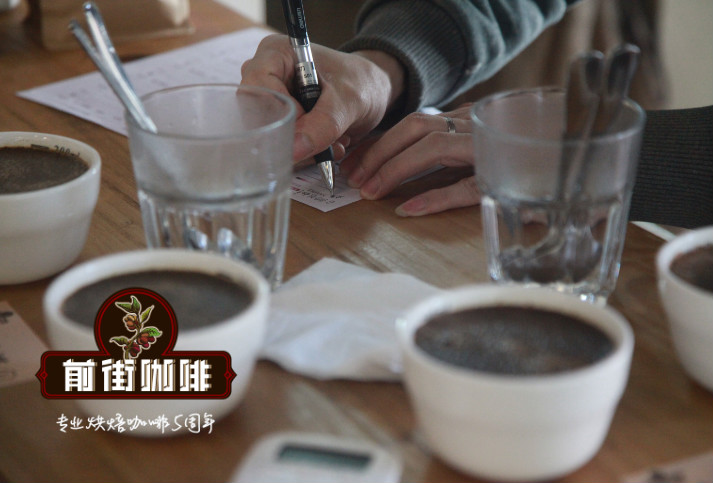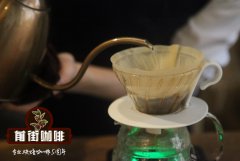Introduction to the Coffee Flavor characteristics of Columbia La Minita Manor, the most popular Coffee producing area

Professional coffee knowledge exchange more coffee bean information please follow the coffee workshop (Wechat official account cafe_style)
Colombia has well-defined growing areas and the impressive variety of coffee they produce. Whether you want round, heavy coffee, refreshing, fruit-flavored (or somewhere in between), Columbia beans are most likely. Colombia is divided by geographical location, and it is not difficult to find that the coffee there has many common characteristics. If you like coffee in one area, other areas will like it as well. Coffee trees get double cropping in Colombia, the second main harvest and harvest each year, which is called "mitaca" locally.
Colombia is located in South America, with the Andes in the west and the alluvial plains in the upper reaches of the Amazon and Orinoco rivers in the east. the pattern is represented by the rainbow giant beaked birds that inhabit this area. the color is dark blue, wine red, purple and black, conveying the intuitive sense of deep roasting coffee beans, full-bodied but still rich in flavor.
[introduction to Colombian Coffee]:
Colombia is the third largest producer of coffee in the world (Brazil is the first and Vietnam is the second). The main factor is that active volcanic activity has created the most fertile soil in the world. grow coffee that is sweet, full-bodied and easy to brew successfully. whether it is a single black coffee or Colombian coffee formula coffee is a good choice. Most of the Colombian coffee trees are Caturra, and the manor will plant some Typica, Buorbon and so on. The southern Narino region near Ecuador has a reputation for producing the Holy Grail used by the Vatican and is a favorite of the world's largest chain of coffee shops.
La Minita Manor, from the southernmost province of Narino in Colombia, carefully selects small estates or farms in the Narino area, and manually selects the best quality and Supremo grade coffee raw beans. Because of these strict screening mechanisms, the annual output of this coffee is only about 6000 packets of coffee, accounting for only about 4% of the Narino producing area. (the whole Nanino province produces about 150000 packets of coffee a year), and these beans are the essence of the Narino producing area. The process is strictly monitored by La minita's Costa Rican European Standard (Costa Rican Europrep standards) and the quality is excellent and stable.
[water treatment Wet/Washed Process]
Increased cleanliness, sour aroma and brightness.
The main handling procedures are as follows:
(1) fruit harvesting
(2) move into the sink to remove floating beans and branch debris.
(3) the pulp is removed by pulp screening machine.
(4) put the pectin-covered pods in water and ferment for 24-72 hours.
(5) many large-scale treatment plants adopt the principle of high and low drop of river and use hydraulic flushing to remove mucous membrane.
(6) the sink is still placed to remove the ripe beans floating on it.
(7) reduce the moisture content by 12% by sunlight or drying in a dryer.
(8) grind off the sheep skin (pods) before export and remove the coffee beans.
(9) remove defective beans by wind, electronic or manual selection and pack them in stages.
END
Important Notice :
前街咖啡 FrontStreet Coffee has moved to new addredd:
FrontStreet Coffee Address: 315,Donghua East Road,GuangZhou
Tel:020 38364473
- Prev

What is the difference in the selection of Colombian coffee? The flavor of Colombian and Brazilian coffee is suitable for baking.
Professional coffee knowledge exchange more coffee bean information please follow the coffee workshop (Wechat official account cafe_style) Colombian coffee is widely sold in many producing countries, ranking the third largest in the world (the first is Brazilian coffee and the second is Vietnamese coffee), the main factor is the active volcanic activity.
- Next

Amista Coffee Manor in Costa Rica introduces the baking degree suitable for Costa Rican coffee
For more information on coffee beans, please follow the coffee workshop (Wechat official account cafe_style). The quality of coffee produced in Costa Rica is the most stable in Central American countries, because Costa Rican coffee grows in a suitable climate and good shading conditions, coupled with fertile soil and stable middle and latter stage treatment, plus organized coffee cooperatives and national coffee.
Related
- Detailed explanation of Jadeite planting Land in Panamanian Jadeite Manor introduction to the grading system of Jadeite competitive bidding, Red bid, Green bid and Rose Summer
- Story of Coffee planting in Brenka region of Costa Rica Stonehenge Manor anaerobic heavy honey treatment of flavor mouth
- What's on the barrel of Blue Mountain Coffee beans?
- Can American coffee also pull flowers? How to use hot American style to pull out a good-looking pattern?
- Can you make a cold extract with coffee beans? What is the right proportion for cold-extracted coffee formula?
- Indonesian PWN Gold Mandrine Coffee Origin Features Flavor How to Chong? Mandolin coffee is American.
- A brief introduction to the flavor characteristics of Brazilian yellow bourbon coffee beans
- What is the effect of different water quality on the flavor of cold-extracted coffee? What kind of water is best for brewing coffee?
- Why do you think of Rose Summer whenever you mention Panamanian coffee?
- Introduction to the characteristics of authentic blue mountain coffee bean producing areas? What is the CIB Coffee Authority in Jamaica?

